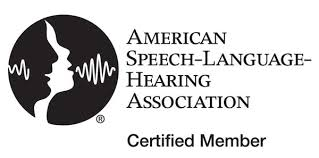Speech Therapy Activities for Voiceless TH
Voiceless /th/ can be a persistent speech problem, but the great news is it’s a pretty easy articulation error to fix!
My very own child who was in kindergarten was having difficulty discriminating between voiceless /th/ and /f/.
Something began happening that I would have never considered had it not been my own child: He began mixing up numbers; 3 vs. 4, 13 vs. 14, and all numbers in the thirties and forties, three hundreds vs. four hundreds, etc.
His speech errors were actually affecting his math abilities! I realized I needed to act immediately. So please be aware that difficulty between voiceless /th/ and /f/ phonemes can get kids confused with not only words, but many numbers too.
Below you will find some activities to get those tongues between those teeth!
Buy Flashcards for Voiceless TH Words for $5.99
1. Visualization of Voiceless /TH/
The first hurdle when working with a child on Voiceless /th/ is helping them with proper tongue placement. Most kids will use the /f/ phoneme to replace /th/. Bring a mirror to the therapy room and tell them to bite their tongue as they blow air onto the mirror.
Badda bing, badda bang!
Practice with simple syllables such as voiceless /th/ followed with vowel sounds. You can make a game with the child that if they are fogging up and spit splattering the mirror, it probably means they are saying the sound correctly! (Just bring your windex!)
2. Discrimination of Sounds
There is a good chance that a child who is not articulating the /th/ sound is also having difficulty discriminating (or hearing) the sound.
Print or draw a large F and a large TH on two separate pieces of paper. As you say the /f/ and /th/ phonemes aloud, have the child slap the corresponding piece of paper in front of them. You could even bring two bells or something that makes noise and have them ring the bell to the corresponding sound.
For a child having difficulty between voiced and voiceless /th/, do this same activity but with TH written on two pieces of paper, one that says “VOICE ON!” and one that says “VOICE OFF!”
For a child, like mine, who is having difficulty with /th/ and /f/ sounding numbers, use this same discrimination activity but with pictures of the numbers next to each other. (Numbers 3 and 4, or 13 and 14 for example).
3. Create a /TH/ Story
This activity will not only be helpful in eliciting voiceless /th/, it is also great for language goals as well.
Have the child choose a /th/ name for the main character of their story.
For girl names starting with /th/ click here and boy names click here. These names get pretty silly, which is all the better.
Once you have a name chosen for the main character, present the child with a voiceless /th/ word list or voiceless /th/ flashcards in the position they are working on.
Assist them while using a piece of paper or dry erase board to create a storyboard for their /th/ story.
Help them keep their story simple and entertaining, and have them retell it a few times during therapy. Then you can send home the storyboard and have them retell the story to their parents for homework.
You can find additional stories with /th/ sounds in our voiceless /th/ flashcard set.
SEE ALSO: The Best Free App for Speech Therapy
4. Think Tank
Make a silly hat like this or bring a silly hat from home.
Tell them when they wear the hat, they are in the “Think Tank!” (You could get extra creative with the “think tank” idea and make a fort under the table or bring in a large box the child can sit in. But a simple hat will do!)
Tell the child when they are in the “think tank” they need to find as many /th/ words as possible.
Mix up flashcards with /th/ words and other words mixed in.
Have the child sort through the words and find all the /th/ words. After you have the /th/ cards, have the child say each word using the carrier phrase “I’m thinking of _____.”
If the card is “thorn,” the child would say “I’m thinking of a thorn!” Have them accentuate that voiceless /th/ for each word they say.
5. Throw it!
In this activity, the child gets to use the garbage can (or recycling bin) as a reinforcer.
What’s better than that!?
Cut strips of paper and have the child write voiceless /th/ words as they practicing saying them. The voiceless /th/ flashcards will save you time on this activity.
When the strip of paper is full of /th/ words, the child gets to crumple it up and THROW IT into the can!
Make them stand far enough away that they will need a few shots to get it in. Have them use the sentence “I can throw my words!” for each shot they take (but they can only take the shot if they say the voiceless /th/ correctly!)
This is a fun and simple game to elicit a lot of voiceless /th/ productions.
6. Voiceless /TH/ Memory Game
The wonderful thing about downloading flash cards is that you can print as many extra copies as you need.
For this game you will need two of each of these words (or any eight words from the voiceless /th/ flash cards). If using position sounds other than initial, use medial and final flash cards).
Thorn
Thief
Thumb
Thirty
Thimble
Thermometer
Thin
Thigh
Place flash cards upside down with four rows and four columns.
Have the child flip over two cards and use each word (word level, phrase, or sentence) before flipping back over.
Then it is the therapist’s turn: flip over two cards.
Tell the child to listen carefully to your sounds as you say them. Make one an incorrect pronunciation and one a correct pronunciation and they have to tell you which voiceless /th/ was correct.
Most matches at the end of the game wins!
You might also like:
7. Thump Thump Thump!
This game is best played in a group.
Have the children sit in a circle and one person is “it,” (similar to duck duck goose.) In the middle of the circle lay out five or six voiceless /th/ flashcards face up.
All the children secretly choose one /th/ word to keep in their mind.
The person who is “it” will walk around the circle and stop at a child and gently tap their head saying “Thump Thump Thump!”
The child who was chosen must disclose their secret word. If it is the same word chosen by the child who is “it,” then they switch places.
If it is not the same word, the thumper must keep on thumping until they find a child that has a matching secret word.
8. Three Word Beanbag Toss
Stand in a circle (or if there are only two of you just stand across from each other).
One person throws the beanbag to another, saying “Three Word Throw!” The person who catches the beanbag must use three voiceless /th/ words.
Then they say “Three Word Throw!” and toss the beanbag to another child, and so on.
Have the flashcards or word list readily available so the kids can think of the words quickly and you will get a lot of productions.
Voiceless /th/ is a fun sounds to work on because it is a visual articulation; the child is saying it correctly if the tongue comes out between the teeth.
Have fun with it!
Thanks for reading through this thought-provoking thread, and have a thabulous day! ;)
Return to top of Speech Therapy Activities for Voiceless TH

About the Author
Lindsey is an M.S. CCC-SLP from Salt Lake City, UT. She received both her B.S. and M.S. from Utah State University. When she's not chasing her 5 crazy kids around, she enjoys creating engaging speech therapy ideas and materials. Read More
Special Deals and Activities, Oh My!
Sign up for Terrific Therapy Emails
Your information is 100% private & never shared.


































